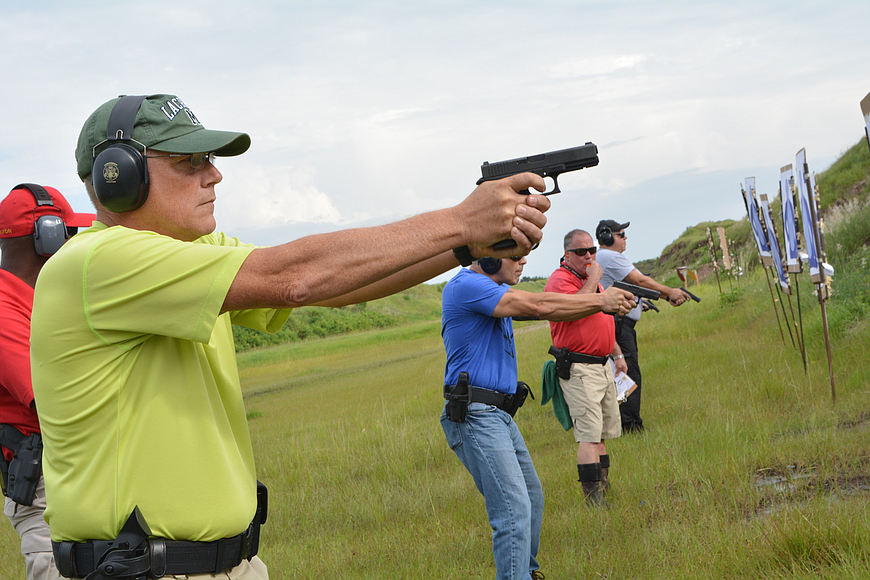- April 26, 2024
-
-
Loading

Loading

Would you want your child’s teacher to have a firearm in the classroom?
Probably not.
Would you want your child’s teacher to have a firearm in the classroom if a deranged gunman were at the classroom door firing to get through the classroom door and start shooting at your child and his/her classmates?
Of course you would.
That’s the thinking behind a tiny portion of Senate Bill 7030.
And, predictably, it has drawn a response like a bat to a beehive.
Here in Sarasota, the bill prompted Sarasota County School Board members to debate this week whether to support resolution that opposes the 10 words in the bill that has triggered high emotions and vociferous opposition.
Here are the 10 words: “… removing the prohibition against classroom teachers serving as school guardians …”
In short, that would allow teachers to possess a firearm at school.
If you recall, in the wake of the Marjory Stoneman Douglas High School tragedy, the Legislature adopted sweeping school safety legislation. Among its provisions was the Coach Aaron Feis Guardian Program.
This is an optional program that requires the approval of each school board. If approved, the program allows Florida’s 67 sheriffs to appoint school guardians who are authorized to be armed on school campuses. They can be any school employee, except for classroom teachers.
Well, not any employee. If you read Senate Bill 7030, you will see these school guardians are required to go through extensive, vigorous training and certification.
The specifics are worth reading. Here is what it would take to qualify:
1. Hold a valid (gun) license issued under s. 790.06.
(FS 790.06 is the 3,500-word statute specifying what is required to qualify for a license to carry a concealed weapon. If you want some assurance that obtaining a gun permit is not as easy as obtaining a driver license, read through that entire chapter. And then keep in mind, the following provisions in Senate Bill 7030 would be required on top of what it takes to obtain a concealed-carry permit.)
2. Complete 132 total hours of comprehensive firearm safety and proficiency training conducted by Criminal Justice Standards and Training Commission-certified instructors, which must include:
a. 80 hours of firearms instruction based on the Criminal Justice Standards and Training Commission’s Law Enforcement Academy training model, which must include at least 10% but no more than 20% more rounds fired than associated with academy training. Program participants must achieve an 85% pass rate on the firearms training.
b. 16 hours of instruction in precision pistol.
c. Eight hours of discretionary shooting instruction using state-of-the-art simulator exercises.
d. Eight hours of instruction in active shooter or assailant scenarios.
e. Eight hours of instruction in defensive tactics.
f. 12 hours of instruction in legal issues.
3. Pass a psychological evaluation administered by a psychologist licensed under chapter 490 and designated by the Department of Law Enforcement and submit the results of the evaluation to the sheriff’s office. The Department of Law Enforcement is authorized to provide the sheriff’s office with mental health and substance abuse data for compliance with this paragraph.
4. Submit to and pass an initial drug test and subsequent random drug tests in accordance with the requirements of s. 112.0455 and the sheriff’s office.
5. Successfully complete ongoing training, weapon inspection, and firearm qualification on at least an annual basis.
6. Successfully complete at least 12 hours of a certified nationally recognized diversity training program.
In addition, SB 7030 would require the sheriff to maintain records of “weapon and equipment inspections, as well as the training, certification, inspection and qualification records” of each certified school guardian. The bill also says a school guardian is not allowed to serve at a school “unless he or she is appointed by the superintendent.”
To be sure, many people would say no amount of training — even far above and far beyond what is spelled out in SB 7030 — would be sufficient to convince them a teacher should be allowed to carry a firearm in the classroom. And given the extensive requirements and thresholds to become school guardian, you can predict, if enacted, there would not be a rush of thousands of Florida teachers going through the certification program.
At the same time, it’s difficult to ignore the ample data that show how guns deter crime. At the end of the 20th century, for instance, while gun sales were rising in the United States, the murder rate was falling. What’s more, John R. Lott Jr., noted economist on guns and author of “More Guns Less Crime,” has compiled voluminous data and examples of how women who carry guns for protection were and are able to thwart predators. He has data showing how poor Americans, who, he says, are the most likely to be victims of crime, experience fewer incidents when they are armed.
And then there is the obvious point: In most of the incidents of mass shootings in schools, the schools have been gun-free zones — and the killers knew this.
The no-gun constituencies are loud and passionate. But when you think through the data (“More Guns, Less Crime”) and absorb the safeguards that are established in the school guardian legislation (school boards and sheriff approval, plus the certification requirements), SB 7030 is giving local school districts control and choice.
We hope the Sarasota School Board isn’t too hasty in fighting against a measure that can, and would, provide more safety for the district’s students.